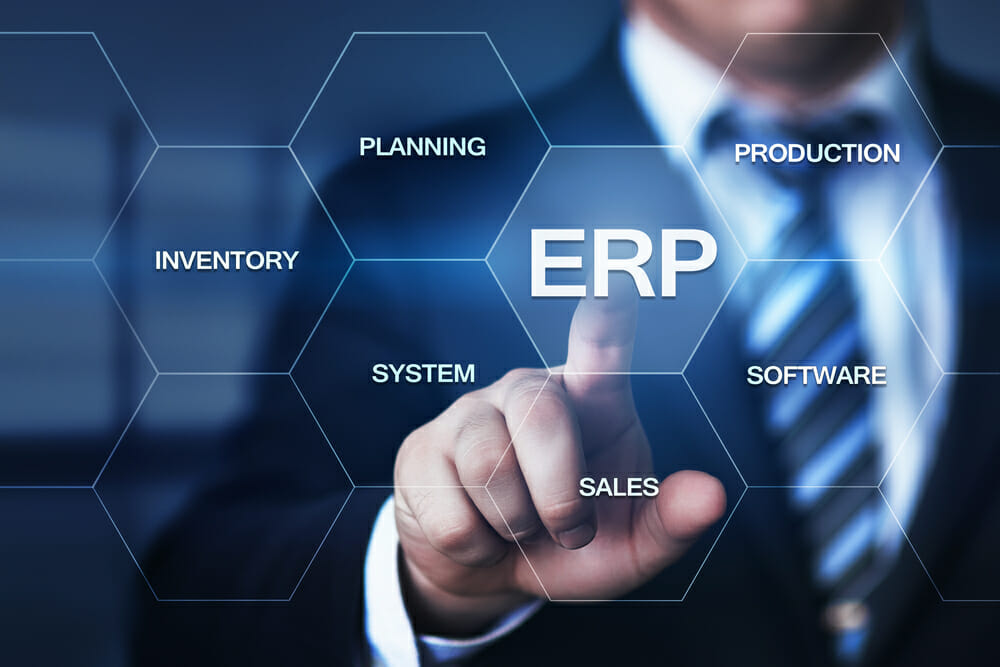At Insoft Innovations, we proudly stand as the preferred ERP solution provider in India. Our forte lies in delivering tailor-made ERP services and solutions to businesses of all sizes, streamlining operations, boosting efficiency, and fueling growth.
No 29, Tulasi Enclave Apartments, Ramappa Nagar, Perungudi, Chennai - 600 096
+91 72003 39650
info@insoftinnovations.com
In the current fast-paced corporate environment, firms must embrace digital transformation. It is now insufficient to fulfill the needs of a dynamic market with traditional techniques of managing resources, processes, and data. This is where enterprise resource planning (ERP) systems come into play. They are strong tools that combine all aspects of an organization’s operations into a single, efficient system.
With the help of ERP services, organizations may become more agile, efficient, and competitive in today’s digital world. In this article, we aim to clarify the nuances of ERP’s role in digital transformation.
In the business world, “digital transformation” refers to leveraging technology to develop new or adapt current company procedures, organizational cultures, and consumer experiences in response to shifting market and business demands. It is a reinvention of the business world for the digital era.
Every aspect of business is impacted by this shift, including marketing, customer service, supply chain management, and operations.
Businesses cannot afford to stay static in a time when consumer expectations are continuously changing and the market is getting more and more competitive.
Digital transformation is now a necessity; it is no longer an option. It helps companies to expand, become more efficient, and stay relevant. It involves figuring out fresh approaches to provide value, bring in money, and raise client happiness.

Tracing back to the 1960s, the roots of ERP systems dig deep into inventory management in the manufacturing sector. From these humble beginnings, they have undergone a profound evolution, adapting to the undulating demands of the business world and the relentless march of technology. Today, ERP systems transcend their traditional roles, morphing into multifaceted tools woven into the fabric of digital business strategies.
Resource management is only one feature of contemporary ERP systems. In data management, analytics, and decision-making, they are indispensable. They offer a consolidated platform for gathering, storing, and analyzing data, empowering companies to get insightful information and make wise choices.

Looking ahead, we can see that technology is evolving rapidly, and ERP systems are no exception. Companies must be alert and keep up to date on the newest innovations and advancements in ERP systems.
Whether it’s utilizing cloud computing, predictive analytics, or AI, understanding these improvements is essential to keeping a competitive advantage. It also guarantees a smooth digital transformation for your business.
SAP stands out as a unified ERP system, strategically optimized for cloud deployment. It leverages the robust capabilities of SAP HANA while offering the flexibility of a cloud-based solution.
Over the years, SAP has solidified its position as a key player in enterprise software, gaining widespread recognition for its ERP solution, S/4HANA. This comprehensive software suite addresses various business needs, encompassing business intelligence, customer relationship management, supply chain management, and more.
Built on a high-performance, enterprise-wide architecture, the SAP ERP system provides a versatile platform incorporating a comprehensive set of best practices.
Companies of all sizes and industries can swiftly adopt these practices, with the added advantage of accessing industry-specific solutions developed by SAP and its partners, facilitating accelerated business growth.

The SAP ERP system offers diverse modules and submodules, catering to different facets of organizational operations. Notable modules include Finance and Controlling (FICO), Supply Chain Management (SCM), Human Capital Management (HCM), Customer Relationship Management (CRM), and Product Lifecycle Management (PLM).
While SAP may initially appear moderately priced, customization requirements can elevate costs. Customizations, often unavoidable, contribute to the total cost of ownership, making it crucial for organizations to carefully consider their specific needs and budget constraints.
SAP implementations generally proceed smoothly, attributed in part to the company’s in-house development approach. While the system offers robust functionality, incorporating custom third-party applications or adjusting the standard setup may incur additional costs and require proactive engagement with the company.
One of the challenges associated with SAP ERP is the complexity of implementation. The extensive features and modules can lead to longer deployment times and higher implementation costs.
While SAP ERP offers an array of functionalities, it comes at a substantial cost. The initial investment along with ongoing maintenance expenses may pose a financial challenge for some organizations.
Oracle ERP stands as a comprehensive suite of enterprise-class software applications, designed for seamless integration to meet the diverse needs of organizations across industries.
Tailored for large organizations with intricate business processes, Oracle’s ERP solution takes an integrated approach to managing all facets of business operations. Currently holding a substantial 5.78% market share, Oracle’s ERP system remains a leader in the market.

Offering a wide array of functionality, Oracle’s ERP system covers financial management, supply chain management, customer relationship management (CRM), human resources management (HRM), manufacturing, project and portfolio management (PPM), and customer service. User satisfaction with Oracle solutions is notably high, with 82% expressing contentment with the breadth of features.
Oracle has enriched its ERP functionality through strategic acquisitions, resulting in a premier but relatively expensive solution. The total cost of ownership for Oracle clients, accounting for 1.7% of annual revenue, contrasts with the 4% for SAP clients. Despite being a high-end solution, Oracle ERP remains affordable.
Offering flexibility, Oracle ERP allows seamless integration of different modules and solutions, including third-party systems. Integration adapters for Oracle Cloud ERP facilitate smooth connections with on-premises or third-party SaaS applications.
While Oracle ERP implementations may take time, the average implementation duration is comparatively lower than other systems, showcasing a balance between complexity and efficiency.
Similar to SAP, Oracle ERP systems can be complex to implement. Customization needs may arise, adding to the intricacy and potentially extending the implementation timeline.
Oracle ERP solutions, while robust, may come with a significant upfront cost. Organizations need to carefully evaluate their budget and weigh the benefits against the investment.
While SAP and Oracle dominate the ERP landscape, several competitors vie for attention in the market. Notable contenders include Microsoft Dynamics 365, Salesforce CRM, Sage, Infor, IBM, and Epicor ERP. Each competitor brings its own set of features and advantages, catering to specific industry needs and organizational sizes.
SAP and Oracle have built a solid reputation over the years. Their longevity in the market instills confidence in customers, assuring them of stability and continuous innovation.
Both SAP and Oracle offer end-to-end solutions that cover a wide array of business functions. This comprehensive approach resonates with organizations seeking a unified platform for their diverse needs.
The global support infrastructure of SAP and Oracle ensures that customers receive assistance across different regions. This is crucial for multinational companies with operations spanning the globe.
Step into the digital age by choosing the right ERP system for your business. Now is the time to progress in your transformation journey. If you need help or advice, Insoft Innovations is here for you. Talk to our experts today for a smooth and successful transition.
 Go Digital for Smarter E-Docs and for a better commerce
December 11, 2023
Go Digital for Smarter E-Docs and for a better commerce
December 11, 2023
 Why we need SAP – Ariba?
December 11, 2023
Why we need SAP – Ariba?
December 11, 2023
 Unleash the Power of Digital Transformation Through ERP
November 11, 2023
Unleash the Power of Digital Transformation Through ERP
November 11, 2023
